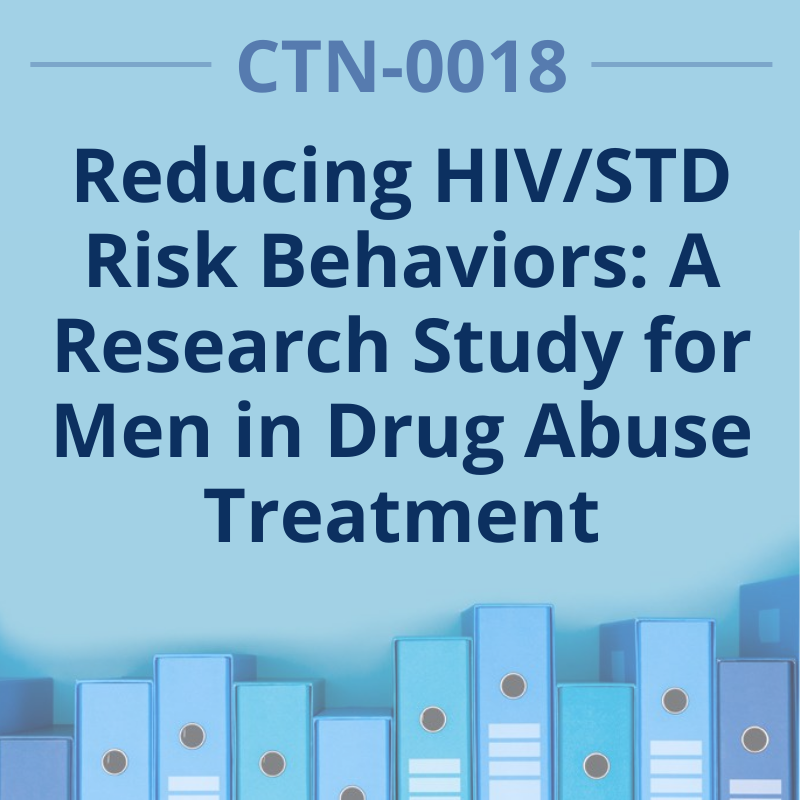CTN-0018: Reducing HIV/STD Risk Behaviors: A Research Study for Men in Drug Abuse Treatment

Donald A. Calsyn, PhD
Lead Investigator
Alcohol and Drug Abuse Institute
University of Washington
dcalsyn@u.washington.edu
Drug treatment itself can have a powerful positive effect on HIV drug use risk behavior, especially needle use behaviors. However, sexual risk behavior has received less attention and has been shown to be more difficult to change. Research suggests that skills-based HIV risk reduction interventions with peer group discussion and single sex sessions can reduce risky sexual behavior. This study evaluated a five-session HIV risk reduction group therapy designed specifically for men, “Real Men Are Safe” (REMAS). This therapy was compared to one session of HIV education, which is typically provided as standard care in drug treatment clinics.
Primary Findings
The motivational and skills training HIV prevention program (REMAS) was associated with greater sexual risk reduction over a standard HIV education session, suggesting that substance abuse treatment programs can help reduce sexual risk among their patients by providing not only information but also practice skills.

Primary Outcomes Article: Calsyn D, et al. Motivational and skills training HIV/sexually transmitted infection sexual risk reduction groups for men. Journal of Substance Abuse Treatment 2009;37:138-150.
Related Studies
A 2009 CTN platform study, “Tailoring ‘Real Men Are Safe’ for African American and Hispanic Men” (5RC1DA028245-02), funded by an American Recovery and Reinvestment Act (ARRA) grant, is developing a new version of the manual from CTN-0018, REMAS-CA (“Real Men Are Safe: Culturally Adapted“) that is more culturally relevant to Hispanics and African Americans. The tailored intervention will be pilot tested for feasibility and acceptability in four community treatment programs (CTPs): Hartford Dispensary (NEC Node), LRADAC (SC Node), Matrix Institute on Addictions (PR Node), and The Life Link (SW Node).
Related Resources
- CTN-0018 Study Protocol
- Publications in the Library about CTN-0018
- Study data from NIDA Data Share
- Study Manual: Calsyn D, et al. Real Men Are Safe (REMAS): A Gender-Focused HIV and Sexual Risk Reduction Intervention for Men in Substance Abuse Treatment. Seattle, WA: CTN Pacific Northwest Node, Alcohol & Drug Abuse Institute, University of WA, September 2009
- ClinicalTrials.gov (NCT00084175)
- NIDA protocol page
Node Involvement
Lead Node(s):
All Participating Nodes: